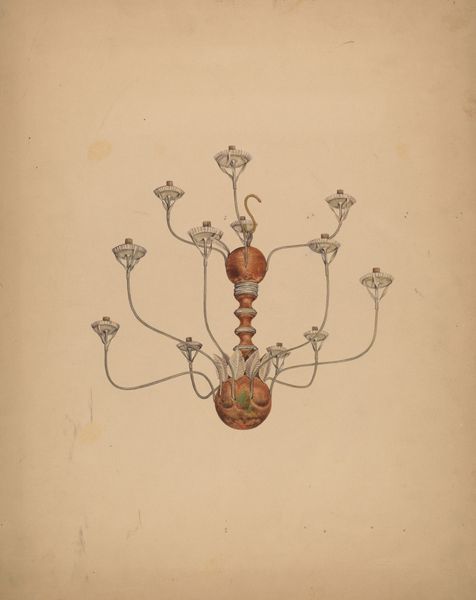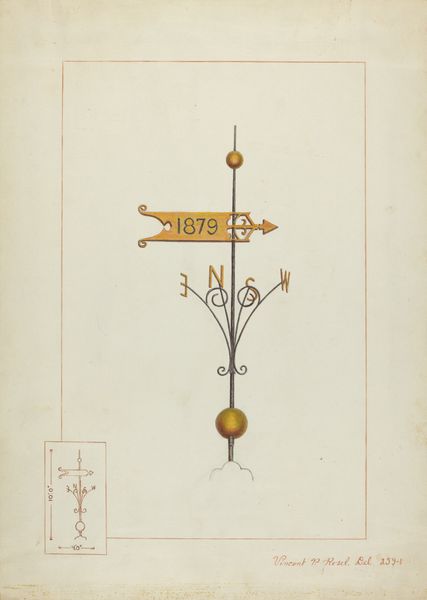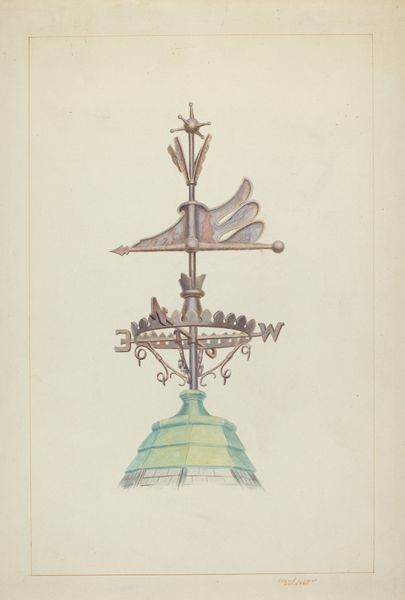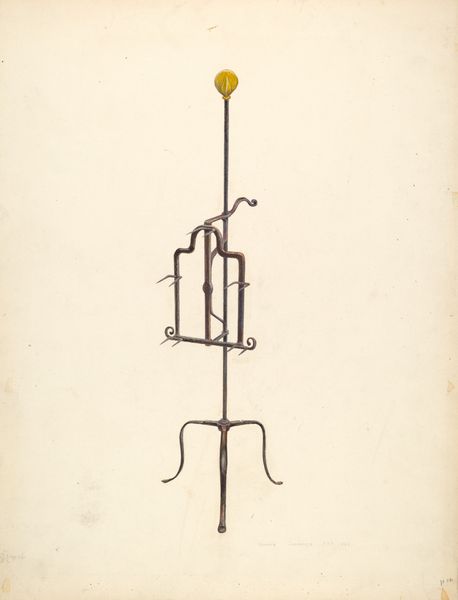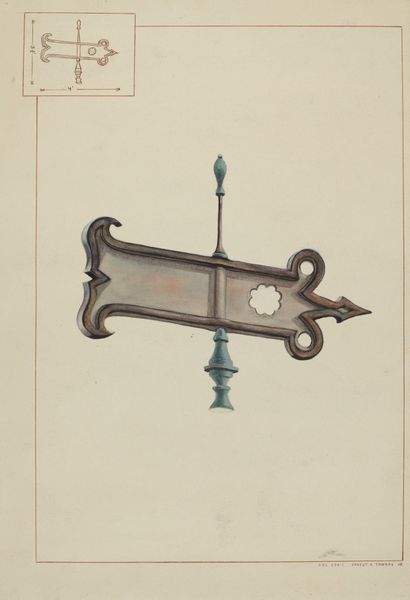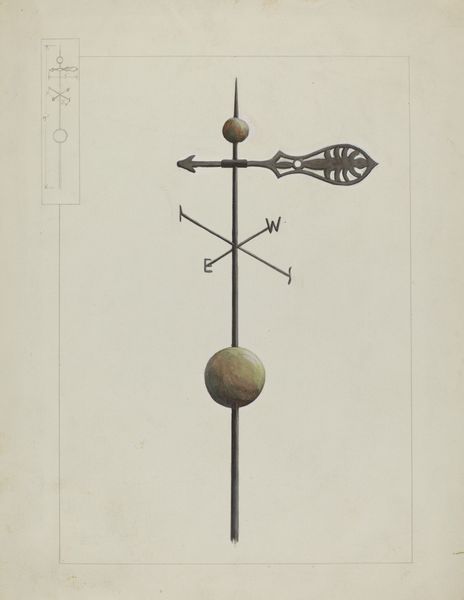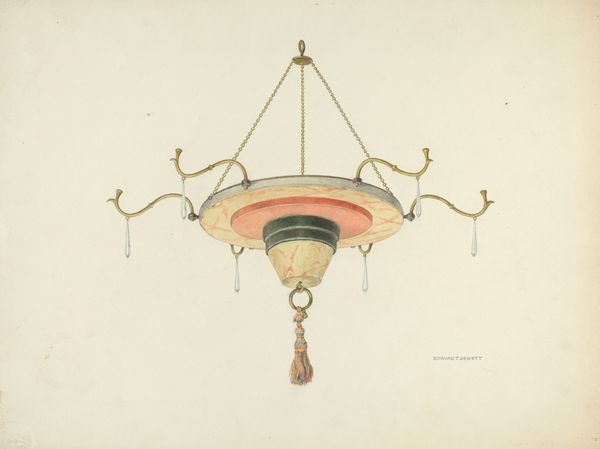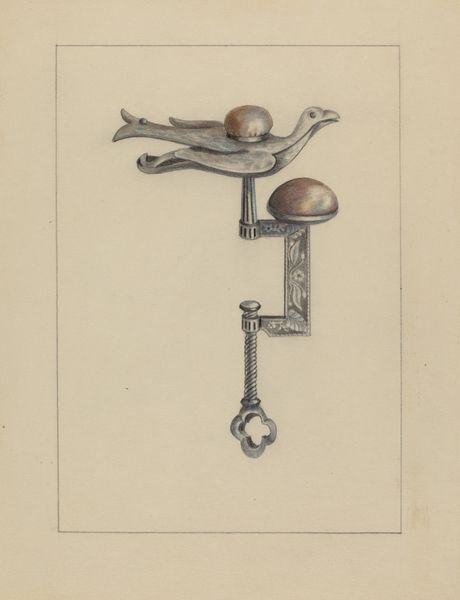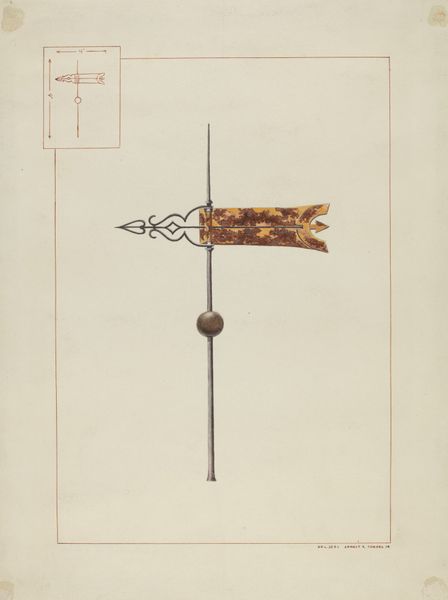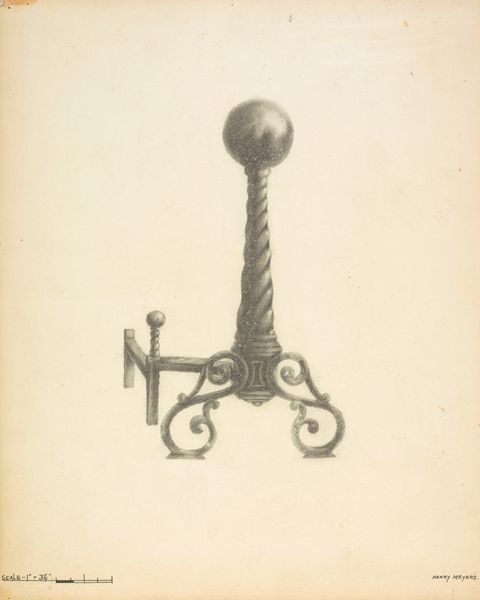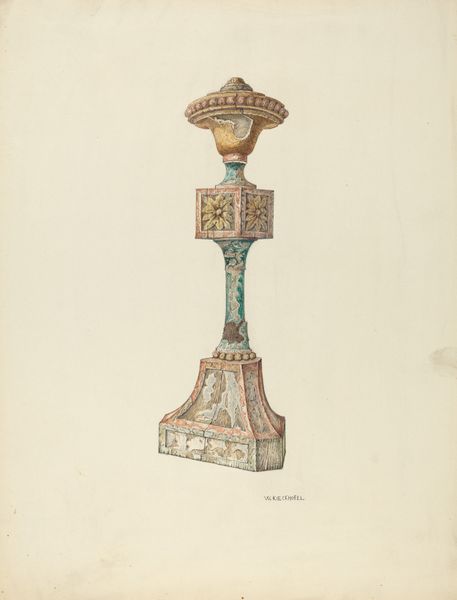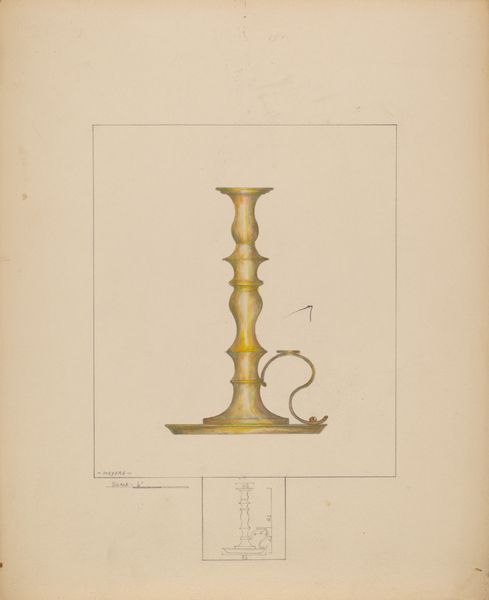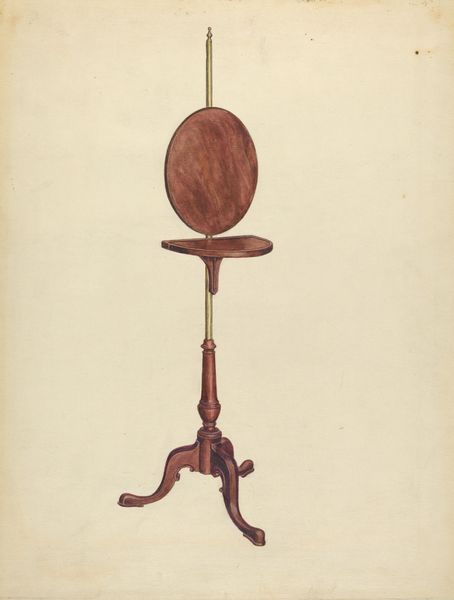
drawing, watercolor
#
drawing
#
water colours
#
landscape
#
watercolor
#
realism
Dimensions: overall: 37 x 26.8 cm (14 9/16 x 10 9/16 in.) Original IAD Object: 72" high; 36" wide
Copyright: National Gallery of Art: CC0 1.0
Editor: So, here we have Edward L. Loper's "Weather Vane," created around 1937 using watercolor. It's a seemingly simple rendering, but I'm drawn to the almost technical quality in the presentation, especially that schematic in the corner. What stands out to you about it? Curator: What fascinates me is how Loper, by meticulously documenting this common object, elevates the mundane to art. Consider the weather vane itself—mass-produced, functional, likely made of copper or iron, materials readily available and affordable in that era. Now it's carefully rendered in watercolor, a medium often associated with "fine art" rather than technical illustration. Editor: Interesting! So you see it as challenging the hierarchy of materials and production? Curator: Precisely. Think about the labor involved in creating a weather vane. It involves metalworking, assembly-line processes potentially... whereas the watercolor requires a different kind of skilled labor, of observation and precise rendering. Loper is asking us to consider both. And what about the social context? What kind of building would feature such a weather vane? Editor: Probably a farmhouse, perhaps something that indicated a commitment to industry. Does this make you think about consumerism at all? Curator: Definitely. This depiction almost freezes the object. In doing so, Loper freezes a single moment of early to mid 20th century industry for reflection. Editor: That’s insightful. I initially saw it as a straightforward depiction, but I'm now considering all those different layers you’ve unpacked about the materials, production and even class! Curator: Art, at its best, reveals the intricate web of material culture surrounding us. We need only to slow down to analyze it.
Comments
No comments
Be the first to comment and join the conversation on the ultimate creative platform.
